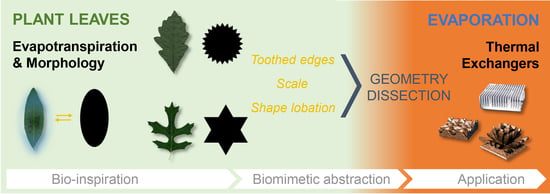enough of the school boy shiat……get back to da kin…..
ganj on…..
ganj on…..
hey bro ..these are basically the same thing..show me a picture of these broad leaf sativas ,
perhaps your description is poor and they are just a sativa with a fatter-than-normal leaf like i have shown already , ,
He heI am an old fk
Gimmie what i want in wld and i will turf my top anything
What the best sativas didn’t have was too much sedation
When indicas came around in 1978
I thought i has the gold and dumped my
Mex sativa that flowered at 45 n lat
Two years later i wanted it back
Wonder why ?
Same with colombian weed
First half of 70’s=rocket weed
After
That…why does my head feel foggy
Oh yeh..they changed the recipe
All the best
sometimes on here ,hey bro ..these are basically the same thing..
he said broad you said fat..
Mexico has lots of "larger than skinny" leaf sativas ..so does Colombia
and they both have skinny leaf
..this back and forth has gone on long enough?
its called Sativa L
Thanks for putting that up Hammer,Here's a good read
The influence of leaf size and shape on leaf thermal dynamics: does the theory hold up under natural conditions?
Laboratory studies on artificial leaves suggest that leaf thermal dynamics are strongly influenced by the two-dimensional size and shape of leaves and associated boundary layer thickness.
Hot environments are therefore said to favour selection for small, narrow or dissected leaves
Thick like a succulent to distinguish from broad as in wide fingered. I agree they are thicker but IMO that would be an addaption to low humidity. As it would cause there to be more tissue to store water in. Thin leaves help tall plants not get destroyed by wind is another reason that I'm they should have an advantage. Where as short plants with a short season need broad leaves to help grow as fast as possible in the early part of the year. This is also why leaves get thiner later in the season.dont think so mate ,
Your lilly white skin will burn in 10 minutes flat in that sun i assure you ,
the closer to the equator , the more direct the sun is ,
you cant just make stuff up based on your lack of education and you have a hunch,
stick to something else you are a little more familiar with please ..
pretty sure you will find the leaf in afghani plants is also thicker as well as fatter ,
this will be an adaption to the dry climate , the leaf on thai plants is thinner and skinnier to dissipate heat and to cope with the intense sunlight , the thickness of the leaf is how it copes with the more humid climate ...
He just preserved it with open polenation not selection. Because the desirable traits in haze are segregating in a way that makes it difficult to lock down in an IBL. He sed neither he or Sam the skunk man had any luck with stabilizing it. It's just a numbers game, it would take more then just filail breeding to stabilize it, and how would you tell where to start if you haven't grown the original parents. Not impossible but it would take many years and an absurd number of plants.THH is IBL or ??.. I had thought Tom worked it before it was released but looks like I was way wrong on that.
I think technically it can't be called IBL unless it's stable for all desirable traits.Tom is a park ranger. To him, working something means preserving as much of what is there, for the future. He is against forcing a line to go "his way". So yes it's ibl, it's worked, but preserved as is.

I think it's more than just humidity, though that's a significant factor. Leaf morphology is influenced mostly by light and water availability. In compound leaves, variations of leaflet dimension should take the whole compound leaf into account. Not just the slenderness of it's leaflets. It's said that the anatomy of a leaf has everything to do with achieving the balance between photosynthesis and water loss in the environment in which the plant grows. That includes how night time temperatures relate as well. For example, the same cutting grown in the same daytime conditions but with drastically different night time temps will likely have different leaf morphologies expressing to show the climatic variability and adaptability of a given genome. As Wally mentioned earlier, it depends on the genes too. How long they've had to acclimate to a given region. If the genetics are even capable of providing the variability needed to adapt. Some stuff is just too far gone and selected away from.Think it's humidity that thin leaf blades help dissipate. Fairly straight forward but whatevs
In cannabis they are generally referring to leaflets not the whole leaf. Tropical cannabis plants have giant fan leaves but in cannabis they always have narrow fingers aka leaflets.I think it's more than just humidity, though that's a significant factor. Leaf morphology is influenced mostly by light and water availability. In compound leaves, variations of leaflet dimension should take the whole compound leaf into account. Not just the slenderness of it's leaflets. It's said that the anatomy of a leaf has everything to do with achieving the balance between photosynthesis and water loss in the environment in which the plant grows. That includes how night time temperatures relate as well. For example, the same cutting grown in the same daytime conditions but with drastically different night time temps will likely have different leaf morphologies expressing to show the climatic variability and adaptability of a given genome. As Wally mentioned earlier, it depends on the genes too. How long they've had to acclimate to a given region. If the genetics are even capable of providing the variability needed to adapt. Some stuff is just too far gone and selected away from.
It's said that plants in humid tropical climates favor broad leaves as they're able to sacrifice water as a tradeoff for cooling via transpiration. Not broad leaflets but broad leaves. I think it's important to make a distinction of the leaf as a whole system including it's leaflets. Cannabis has such a complex leaf structures even the grooves in the petioles are of significance to balancing the aforementioned photosynthesis and water availability. To me, all cannabis is broadleaf. Some have varying degrees of thinness or broadness to their leaflets, but when viewing the leaf as a whole how are they not all broad leaves? Genuinely asking. Much love

